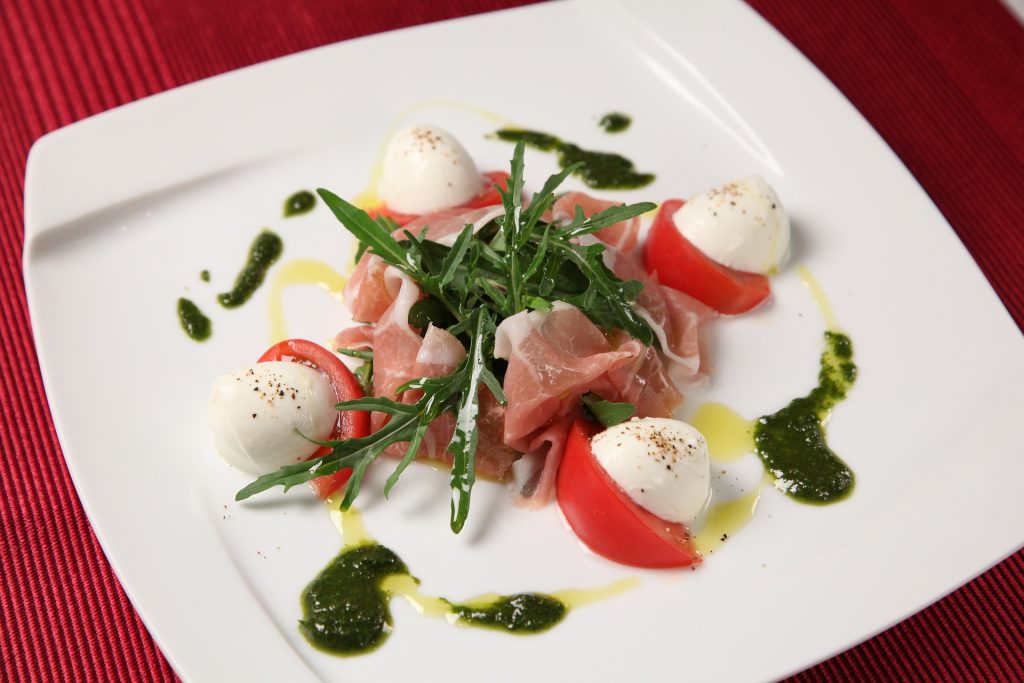From sautéing to drizzling, it seems recipes requiring oil are everywhere. But with so many options out there, knowing how to pick the right one can be confusing. Don’t get sidetracked with fancy glass bottle packaging and product labels. Flavor and smoking point are the most important factors matter when making the choice between popular oils like canola oil, coconut oil, olive oil and relative newcomer, avocado oil. Here’s what you should know:
smoking POINT
Smoking point is the temperature at which oils start to smoke and burn. Every oil and fat has one whether it’s butter, margarine or canola, when you cook an oil past it’s smoking point, it will taste terrible. If you’re cooking foods at high heat, be sure to pick an appropriate oil.
Vegetable oil
- Smoking point: between 400 to 450ºF
- Best for: Frying, achieving crispy, crunchy textures in food
- Taste: Neutral
- Nutrition: Calories per tablespoon, 124; Fat per tablespoon, 14 grams
Canola OIL
- Smoking point: 400ºF.
- Best for: Frying, browning and roasting. Very versatile.
- Taste: Neutral
- Nutrition: Calories per tablespoon, 120; Fat per tablespoon, 14 grams
olive OIL
- Smoking point: Extra virgin olive oil starts at 325ºF. Virgin olive oil is around 420ºF and Extra light olive oil is even higher than that.
- Best for: Dipping with crusty bread or spreading on grilled vegetables. Drizzling over salad.
- Taste: Can be grassy and green while others are smokey and golden.
- Nutrition: Calories per tablespoon, 119; Fat per tablespoon, 13.5 grams
coconut OIL
- Smoking point: Do not exceed 350ºF.
- Best for: Substitute for butter in baked goods and desserts.
- Taste: Slight coconut flavor.
- Nutrition: Calories per tablespoon, 117; Fat per tablespoon, 14 grams
avocado OIL
- Smoking point: 480ºF.
- Best for: Use as you would olive oil. Also good for frying because of high smoke point.
- Taste: Takes on a slight avocado flavor, but very mild — makes for a great carrier oil for other flavors.
- Nutrition: Calories per tablespoon, 124; Fat per tablespoon, 14 grams
PEANUT OIL
- Smoking point: 450ºF.
- Best for: Use in Asian cuisine and stir fries. Can be great for deep frying — but use quickly, since it goes rancid within a few months.
- Taste: The pale color is misleading. Peanut oil has a nutty scent and a powerful flavor.
- Nutrition: Calories per tablespoon, 119; Fat per tablespoon, 14 grams
grapeseed OIL
- Smoking point: 420ºF.
- Best for: Use in vinaigrettes. It is less expensive than extra virgin olive oil.
- Taste: The mild taste plays well with many other flavors. Any herbs added will shine through.
- Nutrition: Calories per tablespoon, 120; Fat per tablespoon, 14 grams
It might not be oil that you need at all though. Butter is creamier and adds tons of texture and flavor to all kinds of recipes that require sauces or poaching, roasting or sautéing. Just be sure to keep it at a low heat, since butter burns at 350ºF.
Clarified butter is another options with an incredibly high smoke point of 450ºF. It’s made by stripping the milk fats away from butter so it’s less likely to burn.

how much to spend
After you determine which of these is best, consider your price point. For day-to-day cooking, there is no need to spend a lot on a high-quality oil when a mid-range will do just as well. Splurge on the extra virgin olive oil when you’re looking at dipping bread, adding to salad or showcasing the oil in a similar way. Still, a good bottle doesn’t have to run you much more than $20. And many high-end shops will let you taste test before buying.
For deep-frying, don’t go for pricey oil. You’ll likely be wasting much of it, anyway. Go for a reliable, cheap and stable canola oil. It will give you perfectly fried chicken or other golden brown goodies.
Every oil has its strengths and weaknesses. The more you know about each, the better you’ll be from the get-go, but only practice can make perfect. So get in the kitchen and try some test runs — It’s never hard to find people willing to try free food experiments.
Also see, What side of the aluminum foil should you cook on?






